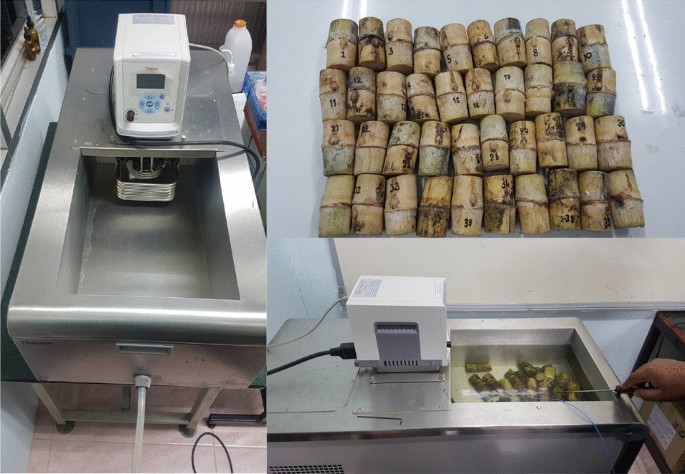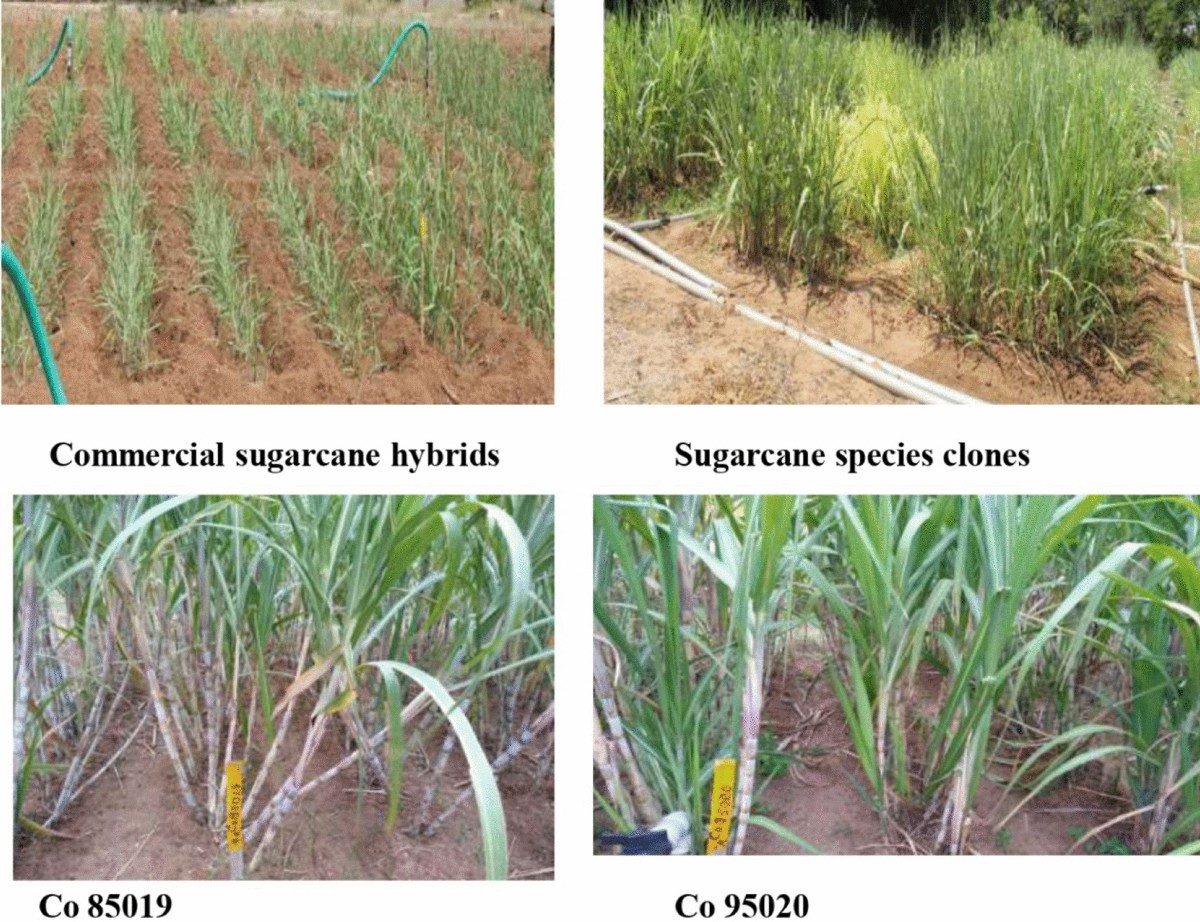Discover the Ingenious Benefits of Products From Sugarcane for Sustainable Living
Sugarcane has arised as a pivotal source in the pursuit for lasting living. Its varied applications cover biodegradable packaging, renewable resource, and much healthier food options. As markets seek environmentally friendly options, sugarcane's flexibility supplies encouraging options. The true capacity of sugarcane extends past its present uses. Discovering its cutting-edge benefits might disclose brand-new pathways towards an extra sustainable future. What other opportunities might this remarkable plant hold?

The Surge of Sugarcane as a Sustainable Resource
As international understanding of ecological problems expands, sugarcane has arised as a famous lasting source. This flexible crop supplies an array of advantages that contribute to environmentally friendly methods. Sugarcane is an eco-friendly source, efficient in thriving in diverse climates while taking in carbon dioxide, therefore reducing greenhouse gas exhausts. Its rapid development cycle enables regular harvesting, causing a continual supply of raw material.Additionally, sugarcane cultivation usually needs much less water contrasted to various other plants, making it an efficient option in water-scarce areas. The byproducts of sugarcane, such as bagasse and molasses, can be repurposed for numerous applications, reducing waste and advertising circular economic climate concepts. In addition, advancements in agricultural methods have actually brought about even more lasting farming techniques, better enhancing sugarcane's environmental profile. As consumers progressively look for sustainable alternatives, sugarcane stands apart as a sensible option for those committed to decreasing their eco-friendly footprint.
Biodegradable Packaging Solutions
How can naturally degradable product packaging remedies change the way consumers come close to sustainability? By using sugarcane-based materials, these cutting-edge solutions supply an engaging option to typical plastics. Eco-friendly product packaging made from sugarcane decays normally, considerably decreasing landfill waste and greenhouse gas discharges. As customers end up being significantly mindful of their environmental effect, the demand for lasting packaging proceeds to rise.These sugarcane-derived products not just serve practical functions yet additionally straighten with eco-conscious consumer worths. They provide a substantial way for people and companies to add to a circular economic situation, promoting source effectiveness and minimizing ecological impacts. Furthermore, as sectors take on biodegradable alternatives, they promote a society of sustainability that resonates with an expanding group looking for liable choices.In significance, eco-friendly product packaging options from sugarcane represent an essential step onward in lasting practices, empowering customers to make eco-friendly decisions without sacrificing comfort or quality.
Renewable Resource Generation From Sugarcane
A considerable portion of sustainable energy generation can be obtained from sugarcane, showcasing its flexibility past traditional farming usages. Sugarcane biomass, consisting of bagasse and leaves, is a potent source for bioenergy production. This biomass can be exchanged biofuels such as ethanol, which works as a cleaner option to fossil gas. Furthermore, the burning of sugarcane byproducts generates heavy steam and power, offering a power resource for sugar mills and neighboring communities.The cultivation of sugarcane likewise adds to carbon sequestration, as the plants take in co2 throughout their development cycle. By making use of sugarcane for energy, waste is reduced, and sustainable practices are motivated. This renewable resource approach not only supports energy demands yet additionally advertises country development, producing jobs in bioenergy industries. On the whole, sugarcane stands out as a principal in the shift to lasting energy options, lining up with international initiatives to decrease carbon impacts.

Eco-Friendly Textiles and Fabrics
Environment-friendly fabrics and fabrics stemmed from sugarcane offer an appealing option to standard materials. These biodegradable alternatives not only lower ecological effect yet additionally provide durability and performance similar to standard fabrics. Lasting production processes better enhance their allure, making them an important part of a lasting way of life.
Naturally Degradable Fabric Choices
Why is the change towards biodegradable material alternatives vital for sustainable living? The increasing recognition of ecological destruction has actually triggered a look for choices to conventional textiles, which usually add to pollution and waste. Naturally degradable textiles, stemmed from renewable energies such as sugarcane, use an appealing solution. These materials decay naturally, minimizing landfill buildup and minimizing ecological influence. Furthermore, they can assist reduced carbon footprints and reliance on fossil fuels. As customers come to be more eco-conscious, the demand for sustainable textiles expands, encouraging producers to invest and innovate in naturally degradable alternatives. This adjustment not just supports sustainable practices yet also fosters a circular economic climate, leading the means for an extra liable approach to fashion and fabric manufacturing.
Durability and Performance
Sturdiness and efficiency are vital variables when assessing environment-friendly textiles and fabrics. Sugarcane-derived materials show excellent stamina and strength, making them ideal for different applications. These textiles commonly show premium moisture-wicking homes, which enhance convenience in day-to-day wear. Furthermore, their natural fibers add to breathability, guaranteeing that garments remain fresh and wearable even sought after conditions. browse around here The performance of sugarcane-based textiles reaches their resistance to put on and tear, enabling products to maintain their integrity gradually. These environmentally friendly fabrics can be treated to improve UV defense and stain resistance, satisfying the practical requirements of customers without compromising sustainability. Ultimately, sugarcane materials offer a harmonious equilibrium of sturdiness and efficiency, appealing to ecologically aware individuals.
Sustainable Manufacturing Processes
The outstanding durability and performance of sugarcane-derived fabrics are complemented by lasting manufacturing procedures that prioritize ecological duty. These procedures make use of eco-friendly sources, decreasing reliance on nonrenewable fuel sources and lowering carbon impacts. By taking advantage of the byproducts of sugarcane cultivation, manufacturers can create environment-friendly textiles while promoting waste reduction. Advanced strategies, such as water-efficient dyeing and biodegradable therapies, better enhance the sustainability of these textiles. Additionally, making use of safe chemicals guarantees that the production process does not harm ecosystems or human health. This dedication to sustainability not just charms to ecologically conscious consumers but also sustains neighborhood economic climates by promoting lasting farming practices. Generally, sugarcane-derived fabrics stand for a considerable step in the direction of a greener future in the garment industry.
Sugarcane-Based Biofuels and Their Influence

Sugarcane-based biofuels have actually arised as a considerable different power source, providing a sustainable solution to the world's expanding energy demands. These biofuels, derived from the fermentation of sugarcane juice or molasses, offer a more sustainable alternative compared to fossil gas. Their manufacturing process produces lower greenhouse gas emissions, adding to environment change mitigation efforts.Additionally, sugarcane biofuels can enhance power security by branching out energy resources and decreasing dependence on imported oil. The cultivation of sugarcane additionally advertises country advancement, developing work and promoting neighborhood economies.However, worries regarding land use and food competitors continue, as enhanced biofuel production might impact food supply chains. Lasting agricultural methods are vital to balancing these competing passions and making sure that biofuel production does not weaken food safety. In general, sugarcane-based biofuels stand for a promising method for a greener energy future, supplied that their environmental and social effects are very carefully managed.
Healthier Alternatives: Sugarcane in Food Products
While several consumers look for healthier options in their diet plans, sugarcane items use a nourishing choice to improved sugars and artificial sugar. Derived from the all-natural removal of sugarcane juice, these products maintain crucial nutrients, consisting of vitamins and minerals, that are usually lost in refined sugars. Sugarcane includes antioxidants and dietary fiber, adding to general wellness and wellness.Many health-conscious people are transforming to sugarcane syrup and jaggery, which provide a lower glycemic index compared to standard sugars, making them ideal for those handling blood glucose levels. Furthermore, sugarcane-derived sugar can enhance the flavor of numerous recipes without the adverse results connected with fabricated additives.This shift in the direction of natural sweetening representatives not just promotes far better dietary selections but additionally aligns with sustainable living practices, as sugarcane is a sustainable resource. Sugarcane products are arising as desirable alternatives in the domain name of food items.
The Future of Sugarcane in Sustainable Advancements
The future of sugarcane is poised to incorporate ingenious applications that extend past conventional usages. Its prospective as a source for eco-friendly packaging services and renewable resource sources highlights its role in sustainable methods. Checking out these developments can significantly influence environmental conservation and resource monitoring.
Naturally Degradable Packaging Solutions
An increasing number of firms are transforming to naturally degradable packaging remedies originated from sugarcane as an encouraging option to typical plastics. These innovative materials, often made from sugarcane fibers and bioplastics, decay naturally, lowering the long-lasting environmental effect connected with conventional plastic waste. By making use of renewable energies, sugarcane-based packaging contributes to a much more lasting manufacturing cycle, straightening with global efforts to deal with pollution and environment modification. Furthermore, these services commonly keep the sturdiness and performance needed for various applications, from food containers to shipping materials. As consumer need for green options grows, businesses adopting pop over to these guys sugarcane packaging not only enhance their brand name image yet additionally play a critical duty in cultivating a round economic situation, leading the means for a greener future.
Renewable Resource Sources
Naturally degradable packaging options are just one facet of the broader potential of sugarcane in promoting sustainability. Another significant application exists in renewable resource resources. Sugarcane is a functional plant that can be used to create biofuels, such as ethanol, which serves as a cleaner alternative to nonrenewable fuel sources. The fermentation process of sugarcane juice yields ethanol that can power lorries and create power. Furthermore, the results of sugarcane processing, like bagasse, can be used to generate biomass energy, providing a reliable and sustainable approach to harness power. This twin duty as both a resource of biofuel and biomass underscores sugarcane's possibility in minimizing carbon emissions and supporting a change to a more sustainable energy landscape in the future.
Regularly Asked Concerns
How Is Sugarcane Collected Sustainably?
Sugarcane harvesting can be lasting with methods like hands-on cutting, which reduces soil disruption, and making use of equipment that lowers gas usage (Products From Sugarcane). Crop rotation and integrated insect management further boost environmental health and advertise long-lasting soil fertility
What Are the Ecological Influences of Sugarcane Farming?

Can Sugarcane Products Be Recycled?
The concern of whether sugarcane items can be reused discloses a positive outlook. Numerous sugarcane-derived products, such as bioplastics and product packaging, are designed for recyclability, contributing to an extra lasting waste monitoring strategy within environmental considerations.
Are There Any Kind Of Downsides to Making Use Of Sugarcane-Based Products?
The drawbacks of using sugarcane-based products consist of possible land usage competitors with food crops, challenges in large-scale manufacturing, and problems concerning the ecological effect of monoculture farming techniques, which can reduce biodiversity and soil health.
Just How Does Sugarcane Farming Affect Resident Communities?
Sugarcane growing impacts local communities by offering employment possibility and increasing neighborhood economic climates. However, it can also bring about land conflicts and environmental worries, affecting farming techniques and neighborhood health, demanding a well balanced method to growth. Innovations in farming practices have actually led to more click for more info lasting farming methods, further improving sugarcane's environmental account. Additionally, the combustion of sugarcane byproducts creates steam and power, offering a power source for sugar mills and neighboring communities.The growing of sugarcane additionally contributes to carbon sequestration, as the plants soak up carbon dioxide during their development cycle. By using sugarcane for power, waste is minimized, and lasting practices are encouraged - Products From Sugarcane. Sugarcane contains anti-oxidants and dietary fiber, adding to total health and wellness.Many health-conscious individuals are turning to sugarcane syrup and jaggery, which offer a reduced glycemic index contrasted to standard sugars, making them appropriate for those taking care of blood sugar levels. Additionally, the results of sugarcane processing, like bagasse, can be used to generate biomass energy, providing a efficient and sustainable approach to harness energy